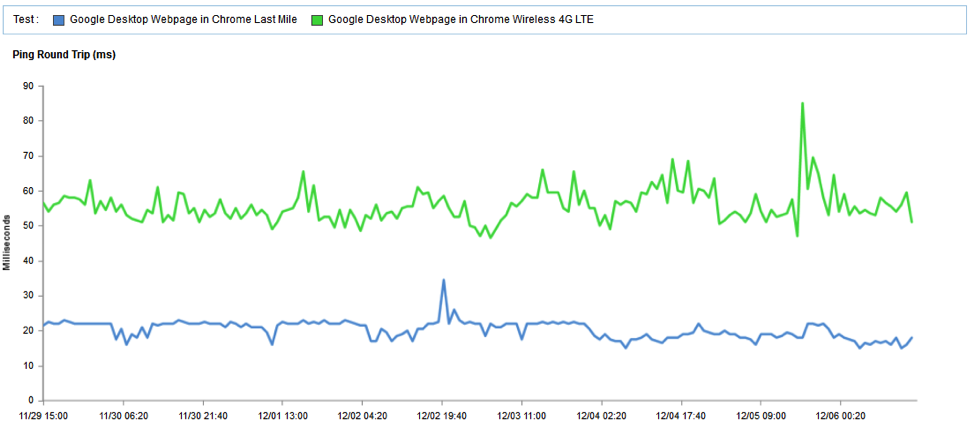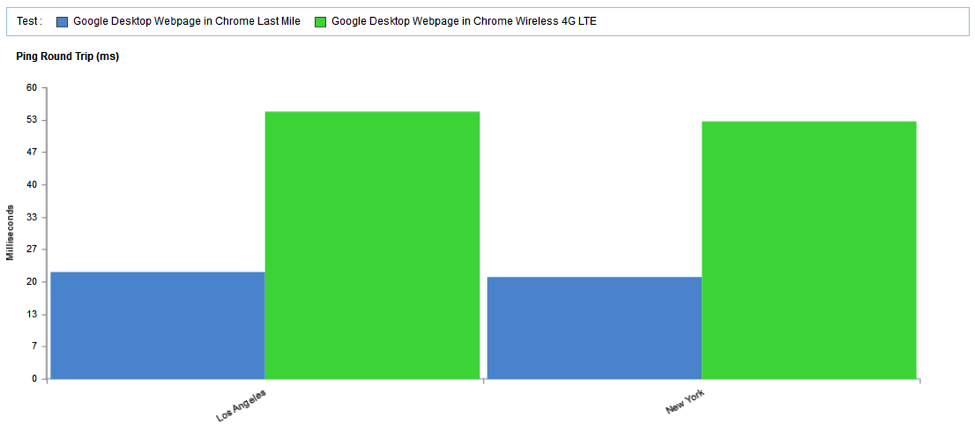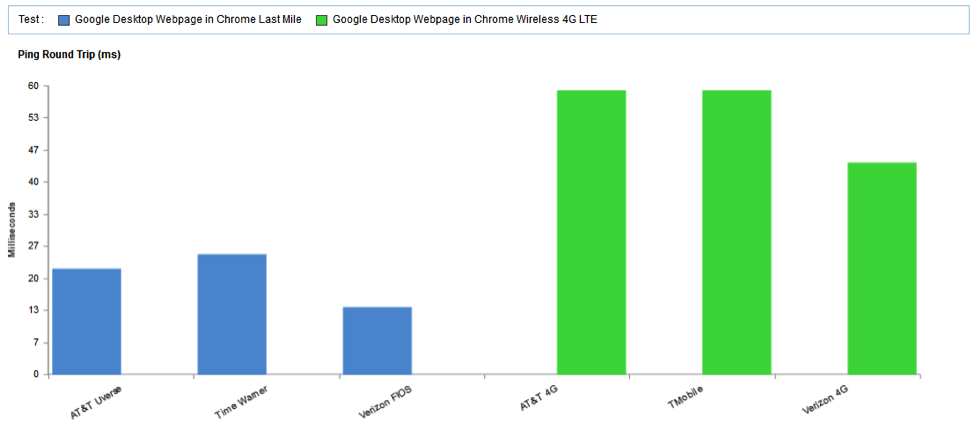
Mehdi Daoudi (@mdaoudi) is CEO/Co-Founder of Catchpoint Systems. Catchpoint provides an enterprise Web Performance Monitoring suite, trusted by many of the world's largest brands.
Behind every device connected to the internet there is an underlying network, which dictates the route data packets travel. When an end user goes to www.google.com from his smartphone, the physical route and limitations of a mobile network compared to consumer internet service providers are rather hidden. Latency offers a way to shed light on these different paths. Latency, which is measured as the time for packet of data to travel from source to destination and back, greatly influences an end user’s experience. The latency that exists in a mobile network impacts the speed of accessing content, no matter what high-powered device you click “Go” from.
To test the performance of mobile networks and consumers ISPs, pings were simultaneously sent to Google from Los Angeles and New York using 4G LTE agents and Last Mile agents (dedicated devices at End User’s home). Google was chosen for its wide distribution of datacenters, and Ping, with its minimally small packet, is considered the best tool to measure latency.
The Ping round trip time for both Last Mile and 4G LTE agents, illustrates significant performance differences.
Figure 1

Figure 1 shows median Ping round trip time over a seven day period.
Last Mile agents exhibit superior performance and consistency, with a median Ping RTT of 21ms to 4G’s 55ms, and a standard deviation of 19ms to 4G’s 132ms. In fact, consumer ISP’s slowest RTT was still faster than all mobile roundtrips through the week’s worth of data.
For both Los Angeles and New York, Last Mile agent performance was more than twice as fast than that of 4G LTE agents:
Figure 2

And in Figure 3, where performance is broken down by network, Verizon FIOS maintained the fastest overall median RTT of the Last Mile agents, followed by AT&T Uverse and Time Warner. 4G LTE lagged well behind all consumer ISPs with AT&T 4G and T-Mobile 4G taking more than 4 times as long as Verizon FIOS to return their packets. Verizon also proved fastest within the 4G LTE networks with a median RTT of 44ms, nearly 26% faster than its AT&T and T-Mobile counterparts.
Figure 3

Ultimately, the data show greater latency exists in mobile networks than in consumer ISPs. While these findings may not come as a surprise to most, they are by no means insignificant as they illustrate a material gap in performance that can only be solved by implementing network optimizations in the 4G networks. Content and application providers should be aware of this limitation and implement lighter content (less bytes, less network activity) as it is the only feasible solution they control.
